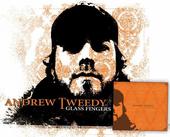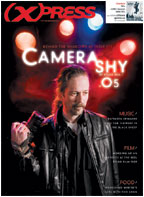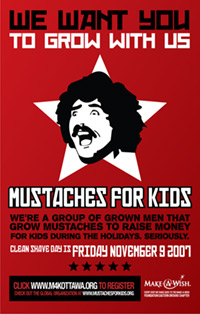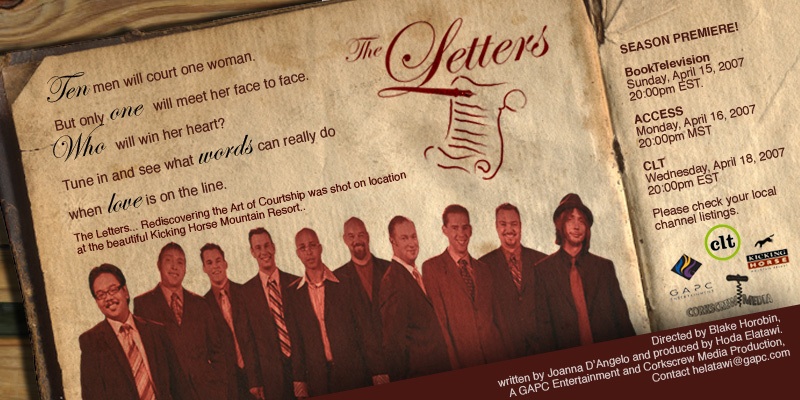In the 2008 March issue of Guerilla Magazine, I team up with Up Front and Tokyo Sex Whale drummer, JP Sadek, to interview Andrew Tweedy from Buried Inside (Relapse Records).
We’re looking at how this talented musician goes from creating the most aggressive hardcore music with a band to retreating to create Glass Fingers, a personal and folky solo effort on Translation Loss Records.
In a city where side projects are the norm rather than the exception for most musicians, Tweedy stands out as a poster child for musical diversity in Ottawa.
HEART BREAKER, HEAD BANGER
Buried Inside is a loud band, but it would be ludicrous to reduce Tweedy to a typical head banger when he can so easily slow it down and trick you into thinking you’re listening to the Red House Painters or another band with the 4AD record label, infamous for introspective and bleeding-heart soundscapes.
And, just as soon as you might label him a sap for folky first-person narratives such as “I walked out / empty-handed / I lost my chance / You turned your back without a second glance,” you remember that this 29-year-old dude can simply swap guitars, flick a switch and assault you with guitar riffs aggressive enough to rip your head off.

Local music buffs may see how Tweedy is following in the footsteps of Lou Barlow, a creative force behind the ‘80s hardcore group Deep Wound, indie rock outfit Sebadoh, and loud alternative rock band, Dinosaur Jr. Besides Barlow’s reputation as a pioneer of feedback- and distortion-heavy lo-fi sounds, he’s also known for introducing a unique brand of acoustic songwriting dubbed “folkcore”—the forceful-yet-vulnerable approach that Tweedy readily embraces.
“By nature, the singer-songwriter stuff is pretty vulnerable,” Tweedy says, pointing out a key difference between folk and metal. “But it is powerful; think of Lou Barlow singing about love.”
Or think of Tweedy, and the power contained in his Glass Fingers title track:
I waited for you on the edge of the drawing board.
But the years have passed and I’m not sure what I’m waiting for.
I wipe my hands of this blind man’s lifelong will to see,
with the burning sun staring down at me like a mystery.
With layered guitar sounds that incorporate power chords, strums and other techniques, the track has both heart and muscle, meaning it could never be mistaken for, say, James Blunt’s uninspiring mega-hit “You’re Beautiful.”
FOLKIN’ POWER
Tweedy’s innovation is that he is both metal and folk, yet at the same time he is purely neither because he routinely breaks boundaries.
Hardcore and metal are often typified as easy outlets for anger and frustration in the face of society’s oppressive order (think of Slayer’s thrash approach to their indignation vis-à-vis organized religion).
But Tweedy and Buried Inside move beyond typical metal with a sophistication that transcends formulaic treatment of clichéd topics. The band crafts more elaborate and complex arrangements and takes a thematic approach to writing centred on philosophical and political ideas.
Meanwhile, traditional singer-songwriters poeticize the everyday and release personal sentiment by setting their poems to music (recall melodic Leonard Cohen singing about last call at a bar or a visit with Suzanne over tea and oranges.) For Tweedy, however, it’s the thrust of the music that comes first.
“The songs on the solo album were written like metal songs,” Tweedy says. “I didn’t change how I wrote. If anything, the solo stuff was written more like European melodic death metal than Buried Inside songs are.”
While Buried Inside erodes the listener’s ears with noise about the outside world to hammer their point home, Tweedy’s solo material offers a rich and textured description of his inner world. He skillfully reduces the cacophony of five blaring rock instruments and the hardcore guitar riffs to more heartfelt melodies in the solo stuff.
Through a unique filter that combines the raw edge of metal and the sentimental quietness of folk, Tweedy creates his own brand of music.
MAKES YOU CRAZY TO WRITE THIS WAY
It must be noted that Buried Inside is much more than Andrew Tweedy plugged in and charged up. Every song, riff and beat is vetted through all five band members and their methodical recordings take years to complete. On the heels of the band’s opus Chronoclast, Buried Inside is now in the midst of writing yet another theme record.
“It makes you crazy to write this way,” Tweedy admits. “You feel like all the parts are there and you’re just trying to put it all together.” Craft is paramount: each band member spends countless hours going over every detail outside of the writing space to avoid rushing the creative process.
Because he’s accustomed to the relative safety of being in a band, Tweedy is a bit shy to take centre-stage when flying solo. His memory of a Lou Barlow concert in Ottawa where the crowd “wasn’t into it and jabbered on” is also a strong deterrent to solo performing. He sees his solo project as more of a “hobby” and wonders how he could make it work without the help of an established name like Barlow.
Besides, Tweedy also feels his compositions are too layered to be performed live without additional musicians, “All those songs on Glass Fingers are so full of guitar parts because I wanted to layer them,” he says. “It would be more interesting to perform it with a band,” he says.
Playing in a hard-driving metal group such as Buried Inside has accustomed Tweedy to feeling empowered on stage.
“There’s so much confidence in that band,” he asserts. “We’re truly doing it for ourselves. We hope that people like it, but we really just don’t care how people judge it because we know what it really means.”
After they recorded Chronoclast in 2004, Buried Inside signed with Relapse Records—perhaps the foremost extreme metal label—so they’ve obviously done something right. Tweedy recalls the make-or-break signing as both exciting and sobering because band members realized they now had to think in “lawyer terms.”
“It’s not that different from signing to a major label,” he says. “You have to give up a lot of rights in this record contract.” And, although he would never regret the decision, he’s never really been interested in the business side of music.
For Tweedy, however, the confines in the contract led to a new opportunity when Relapse helped him land a distribution deal for Glass Fingers with Translation Loss Records, whose owner is a former employee of Relapse. Talent attracts talent, as the saying goes.
Separate record labels specializing in divergent genres have seen Tweedy as an innovator and a unique force in song-writing, a guy as skilled with political and philosophical metal as he is with his acoustic material that’s powerful and robust.
Of course, this doesn’t mean Tweedy is close to making it in the mainstream. When presented with an original, innovative artist, the masses usually run back to the army of manufactured talent whose bleached smiles, perfect hair, and adorable minor defects all but guarantee record sales at chain stores that define this latest bastion
of sameness.
In a period in our musical evolution when it can seem like everything is converging into a single heap of mediocrity, it may be that metal and folk—genres that appear to occupy opposing ends of the musical spectrum—have the best chance to restore some artistic legitimacy to the music industry. That’s great news for Buried Inside and for Tweedy, an artist who is demonstrating that metal can appeal to the intellect and folk can be flat-out hard core.
Content is their cause. Guerilla looks at Ottawa through a wide-angle lens to create material that is substantial, intelligent, diverse, approachable, curious, experimental, and presented from multiple viewpoints. Guerilla publishes feature stories, essays, images, and a variety of contributions from local artists, arts writers, and cultural observers. Check them out at www.getguerilla.ca.










